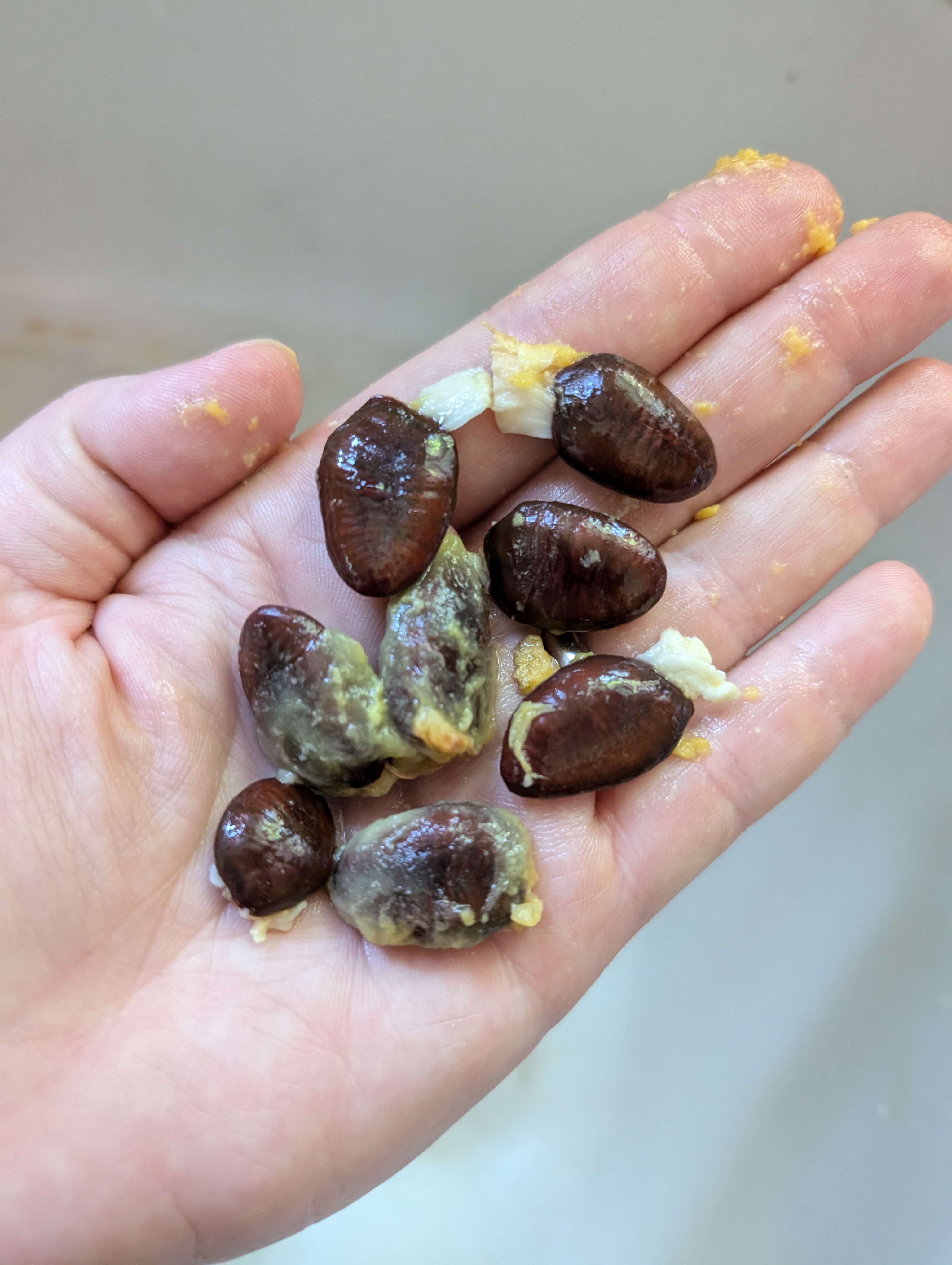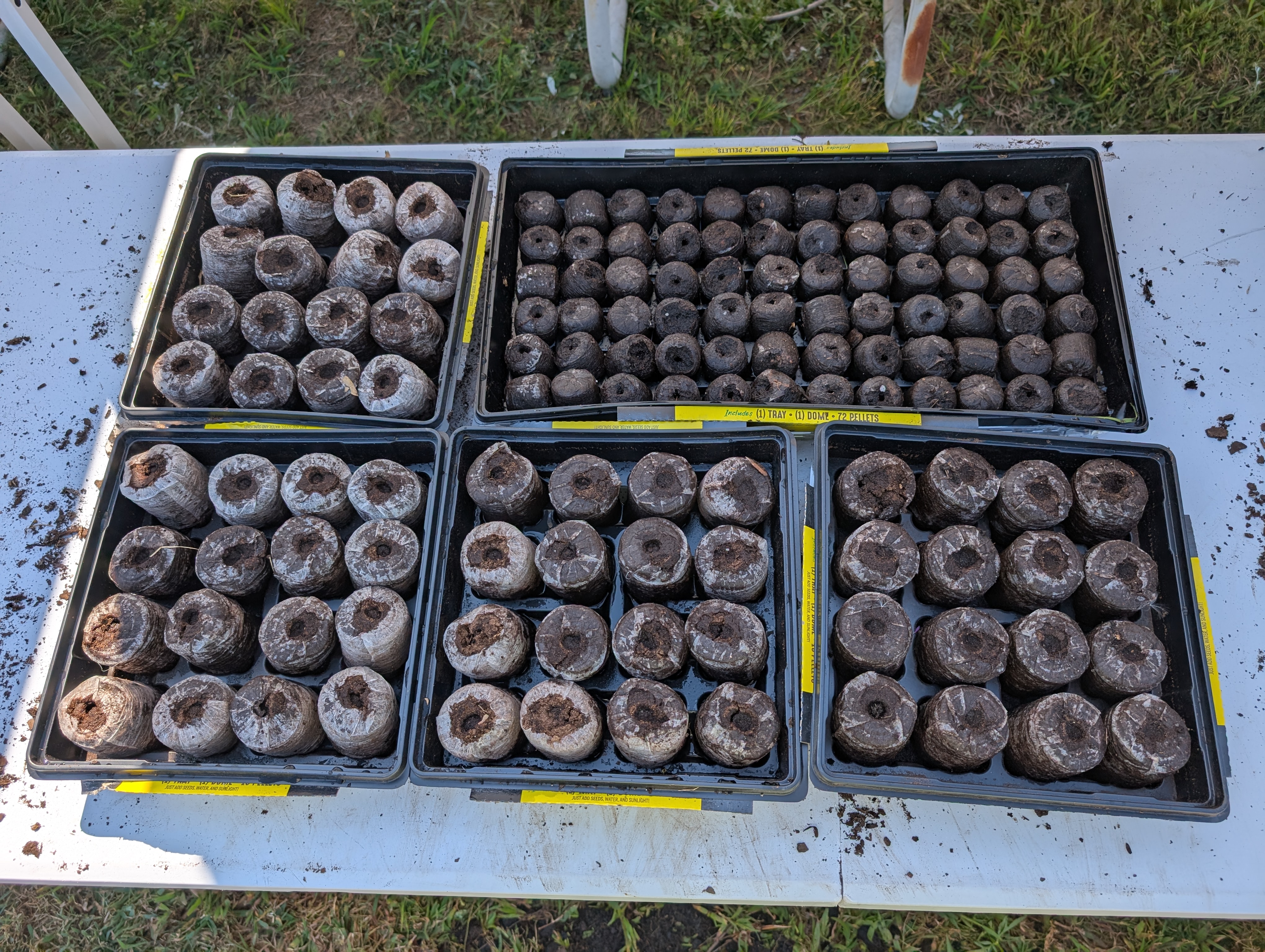What’s in Seed? Top Tips for Seed Saving and Sowing
go.ncsu.edu/readext?1098297
en Español / em Português
El inglés es el idioma de control de esta página. En la medida en que haya algún conflicto entre la traducción al inglés y la traducción, el inglés prevalece.
Al hacer clic en el enlace de traducción se activa un servicio de traducción gratuito para convertir la página al español. Al igual que con cualquier traducción por Internet, la conversión no es sensible al contexto y puede que no traduzca el texto en su significado original. NC State Extension no garantiza la exactitud del texto traducido. Por favor, tenga en cuenta que algunas aplicaciones y/o servicios pueden no funcionar como se espera cuando se traducen.
Português
Inglês é o idioma de controle desta página. Na medida que haja algum conflito entre o texto original em Inglês e a tradução, o Inglês prevalece.
Ao clicar no link de tradução, um serviço gratuito de tradução será ativado para converter a página para o Português. Como em qualquer tradução pela internet, a conversão não é sensivel ao contexto e pode não ocorrer a tradução para o significado orginal. O serviço de Extensão da Carolina do Norte (NC State Extension) não garante a exatidão do texto traduzido. Por favor, observe que algumas funções ou serviços podem não funcionar como esperado após a tradução.
English
English is the controlling language of this page. To the extent there is any conflict between the English text and the translation, English controls.
Clicking on the translation link activates a free translation service to convert the page to Spanish. As with any Internet translation, the conversion is not context-sensitive and may not translate the text to its original meaning. NC State Extension does not guarantee the accuracy of the translated text. Please note that some applications and/or services may not function as expected when translated.
Collapse ▲The fall is a great time to reflect on the year’s garden and appreciate the fruits of your labor. If you’ve been putting in even just a little bit of effort, usually Mother Nature will reward you with a few asters, goldenrods, and some grasses, even with some benign neglect. But fall is also really important for collecting seeds, both from your vegetable garden and from your perennials and wild plants. Here’s some pointers to help you if you would like to save seeds.
What’s Going to Seed Now in October
For native plants and perennials, species like purple coneflower and black-eyed susan have mature seed heads that can be collected this time of year. Leaving some of these seed heads on your plants also provides a vital food source for birds throughout the fall and winter.
In the vegetable garden, your summer crops are wrapping up. You may find mature fruit and seed pods from some crops that have been left to fully ripen. For example, for beans and peas: Look for pods that are dry, brown, and rattle when shaken. Bring the whole pods indoors to finish drying; for peppers: Peppers for seed saving should be left on the plant past their eating stage until they are fully ripe and have reached their final color.
Why Save Seeds?
When you grow a plant from seed, you are growing a new genetic individual. There has been genetic recombination that happens and the individual that you’re growing is different from the parent plants. This is exciting because that means there’s a whole new set of genetics in the local gene pool, and sometimes you can get some fun offspring from hybridization, especially in the garden. However, it also can mean that sometimes things don’t come true from seed and may not perform as well as the plants you collected them from.
To ensure your new plants closely resemble the parents, choose open-pollinated or heirloom varieties to save seed from. Avoid saving seed from F1 Hybrids, as these seeds may produce a mix of inferior and varied offspring that do not resemble the parent genetic. On the flip side, there’s a concept in horticulture called hybrid vigor, where the offspring of two individuals is much more vigorous and advantageous in the garden or in nature.
When to Collect Seed
It’s important to understand what the seed looks like on the plants you are collecting seed from. There’s a lot of diversity in what seeds look like, and they can vary widely among related individuals. Harvesting at the right time is essential; a fruit might be perfect for eating, but the seed inside may still be too immature to be viable. Mature seeds are generally plump and heavy for their size. I have certainly seen folks think they’ve saved seeds before and actually ended up saving chaff or the immature flowers of a plant. There are guides to identify seeds and when to collect different plants.
How to Clean and Store Seed
How you clean and store seed again will be determined by what plant you are saving it from. Generally speaking, you either have dry seeds or wet seeds. Dry Seeds (e.g., Beans, Peas, Lettuce) need to fully dry down on the plant. After collecting, they may require “threshing” (separating the seed from the pod/chaff) and “winnowing” (blowing the lighter chaff away). Wet Seeds (e.g., Tomatoes, Cucumbers, Squash) require more processing. The seeds often need to undergo a fermentation process to remove the gelatinous coating that contains germination-inhibiting chemicals. For tomatoes, scoop the seeds and gel into a jar with some water and stir daily for up to five days until the viable seeds sink. Pour off the liquid, rinse the sunken seeds, and spread them to dry.
(blowing the lighter chaff away). Wet Seeds (e.g., Tomatoes, Cucumbers, Squash) require more processing. The seeds often need to undergo a fermentation process to remove the gelatinous coating that contains germination-inhibiting chemicals. For tomatoes, scoop the seeds and gel into a jar with some water and stir daily for up to five days until the viable seeds sink. Pour off the liquid, rinse the sunken seeds, and spread them to dry.
Top Extension Tips for Long-Term Storage
The key to any long-term storage of seeds that can be saved is cool and dry. High humidity and warm weather can cause mold to form on the seeds, which can lower their germination rate or kill them altogether. It’s important to remember that seeds are living.
- Ensure Seeds are Completely Dry: Before storing, seeds must be thoroughly dry to prevent mold and rot. You can test large, dry seeds like beans by hitting one with a hammer—if it shatters, it’s ready; if it mashes, it needs more time.
- Cool and Consistent Temperature: Store seeds in a cool, dry location away from direct sunlight. The ideal storage temperature is between 32∘ and 41∘F. A dedicated, sealed container in the refrigerator is an excellent option for long-term storage.
- Use a Desiccant: Place your seeds in an airtight container, such as a glass jar, along with a moisture-absorbing material (a desiccant) to reduce humidity. You can use a packet of silica gel as a simple solution.
- Label Everything: Always label your saved seeds with the plant name, variety, and the date of harvest. Use saved seed within one year for best germination rates, although some seeds will last longer.
Germinating Seeds
Now that you’ve gone through the trouble of cleaning and storing them, you probably want to grow your plants from seed. Again, this process will be dependent on the type of plant you’re trying to grow. Some plants prefer to germinate in warm or cold weather. Some need to undergo what is called scarification, which means that the  seeds need to be gently damaged to break the seed coat for the seed to start germinating. Some seeds also need to undergo stratification, the process of undergoing a warm or cold period in order to break dormancy. Different seeds require different lengths of time for stratification, and some may need to go through multiple seasons before germinating.
seeds need to be gently damaged to break the seed coat for the seed to start germinating. Some seeds also need to undergo stratification, the process of undergoing a warm or cold period in order to break dormancy. Different seeds require different lengths of time for stratification, and some may need to go through multiple seasons before germinating.
Growing plants from seed is very rewarding and can help your garden and local ecosystems increase genetic diversity and hedge our bets against monocultures in our ecosystems. Also, it is a source of pride for folks when they grow their vegetable plants from seed or native plants from seed and plant them in their garden. If you are interested in growing plants from seed, please contact your local Cooperative Extension Office.
Amanda Bratcher is the Horticulture Agent for North Carolina Cooperative Extension in Lee County




